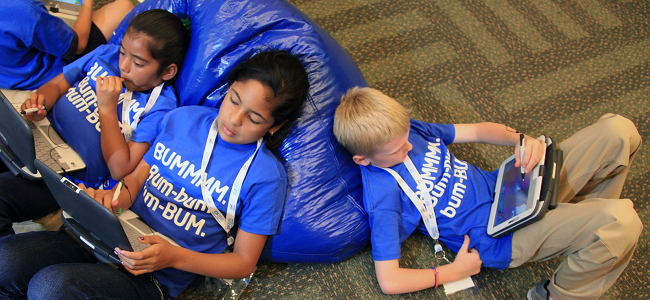Several mobile solutions have been used in recent years to assist children with the PECS training program. Tablets designed specifically for education are built to meet the needs of these students and offer a highly-portable solution. The combined use of the PECS program and educational tablets can support specific teaching goals of Special Education Needs (SEN) teachers. This article will examine the process of PECS training and the use of educational tablets for SEN purposes.
Training Requisites for PECS
PECS training requires a set of criteria from candidates in order to be effective. There is a broad age-range in which PECS training could be offered, but the candidate with cognitive impairment needs to have the following:
- They need to be an intentional communicator. This means that the individual is aware of their need to communicate a message to another person even if this awareness is limited. If the child does not attempt to communicate physically or in another manner when they are attempting to obtain something then they may need a different training approach.
- Since PECS helps teach the effectiveness of alternative communication it is essential for the student to have personal preferences so that they will be able to grasp the power they gain through this communication.
- While picture discrimination is not necessary, individuals who have this skill will likely make progress more quickly in the beginning phases of the program.
PECS Candidates and Protocol
The PECS method is chiefly used to help individuals who are nonverbal but it can also be used for people with unintelligible speech, or others who are only able to make use of a small set of meaningful words or signs. The strengths and weaknesses of each prospective learner must be carefully evaluated in order to place them in the ideal program for their needs.
This system was developed to teach children with limited speech capabilities to communicate in a functional manner. Children learn how to initiate interactions within a social framework through the use of pictures to access desired items. The beginning phases focus on using a single picture for a specific object and this eventually leads to the construction of picture-based sentences to fulfill a variety of requests. Building a vocabulary through pictures allows the child to articulate observations, desires and feelings and teaches the child how to exchange pictures for specific objects. There is increasing interest surrounding the use of teaching tablets to execute this training and some schools are already using them.
Advantages of PECS over other Systems
Using the PECS training program has several clear benefits when compared to other systems. The main advantages include:
- Every exchange is intentional and easily understood. When a child gives you a picture the message can be clearly determined. This provides the child with an effective means to gain access to their desires and needs.
- Children are trained to initiate communication rather than being drilled to respond to specific phrases or instruction. This method encourages independent communication in naturally occurring circumstances.
- The reinforcement process in PECS is meaningful and rewarding, which creates strong motivation.
- Materials can be easily accessed through mobile solutions or other resources.
- With PECS, communicative partners are essentially unlimited for the child. Anyone who is willing to attempt communication through the use of pictures is someone they can interact with. This system is not limited to individuals who understand sign language or who are particularly familiar with the child.
Teaching Tablets for SEN
A tablet is a computer that is accessed through a touch screen and is operated by a user who taps or swipes on the screen with their fingertips. They are most commonly used to access the internet and serve as a platform for software known as “applications” or “apps.” Tablets can be a simpler solution than a computer for SEN purposes because they do not require the use of a mouse or keyboard and because of their portability.
Although traditional voice output communication devices for children with disabilities have been available for several years, many of them lack portability and can be costly. Through the use of specialized apps, tablets can serve as a communication device for people with communication disorders and can provide an economical, portable and socially acceptable communication tool.
Numerous apps can be accessed through these tablets and have been developed for the purpose of supporting autism and other disorders. Some of the functions that these apps offer include:
- Communication – Apps support and enhance communication through visual aids, schedules and timetables, information sharing between home and school and can also serve as speech generating devices.
- Behavior Support – Apps are able to track and monitor behavior and encourage improved behavior through reward systems.
- Social Interaction – Offer a platform for social stories, sharing and skills (emotion and facial recognition) as well as programs that aim to teach eye contact.
- Sensory Processing – Apps that provide visual stimulation and support self-regulation.
When tablets are being recommended as communication and teaching devices it is important to consider the specific role they will play in the child's learning experience. The unique ability of the tablet to empower special needs children is undeniable and they continue to grow in popularity for use in SEN settings.
Enabling Communication
An aptitude to communicate at an advanced level is one of our more distinctive traits and individuals suffering with developmental issues need to overcome significant obstacles to achieve this. Fortunately, the use of PECS and specialized tablet teaching are helping to bridge this gap.
Mobile solutions can assist some children with communication problems. The ability of the child to use a PECS is one of the determining factors for tablet teaching effectiveness. The skills involved with PECS can transfer simply to using a touch screen tablet as a tool to facilitate communication. There are several advantages that tablet can provide in SEN situations:
- Touchscreen: A touchscreen can be extremely helpful for individuals lacking the coordination to use a mouse or keyboard.
- Eye-Gaze Monitoring Technology: Various eye-gazing technologies are allowing users with severe physical limitations to interact with their mobile device and can be used for communication and other computer-based interactions.
- Fitting In: The ability to blend in with peers can be a challenge for children with disabilities and the need to transport a clunky electronic device does not support this. The use of a customized tablet can reduce some of the unwanted attention that comes with speech disabilities and help the user communicate more easily.
Children who use these tablets to communicate rely on them to serve as their voice and it is what they use to interact with others. In these cases it is best to limit the use of the teaching tablet exclusively for this purpose. If the tablet is used for games or other entertainment it can result in confusion and distract from the chief purpose of the device. The combined use of a PECS with a teaching tablet can serve as a significant aid to children with disabilities. Technology that fosters learning, communicating and socializing may be one of the greatest tools for SEN teachers and their students.
Have you employed PECS in your work? Share your experiences in the comments.


















